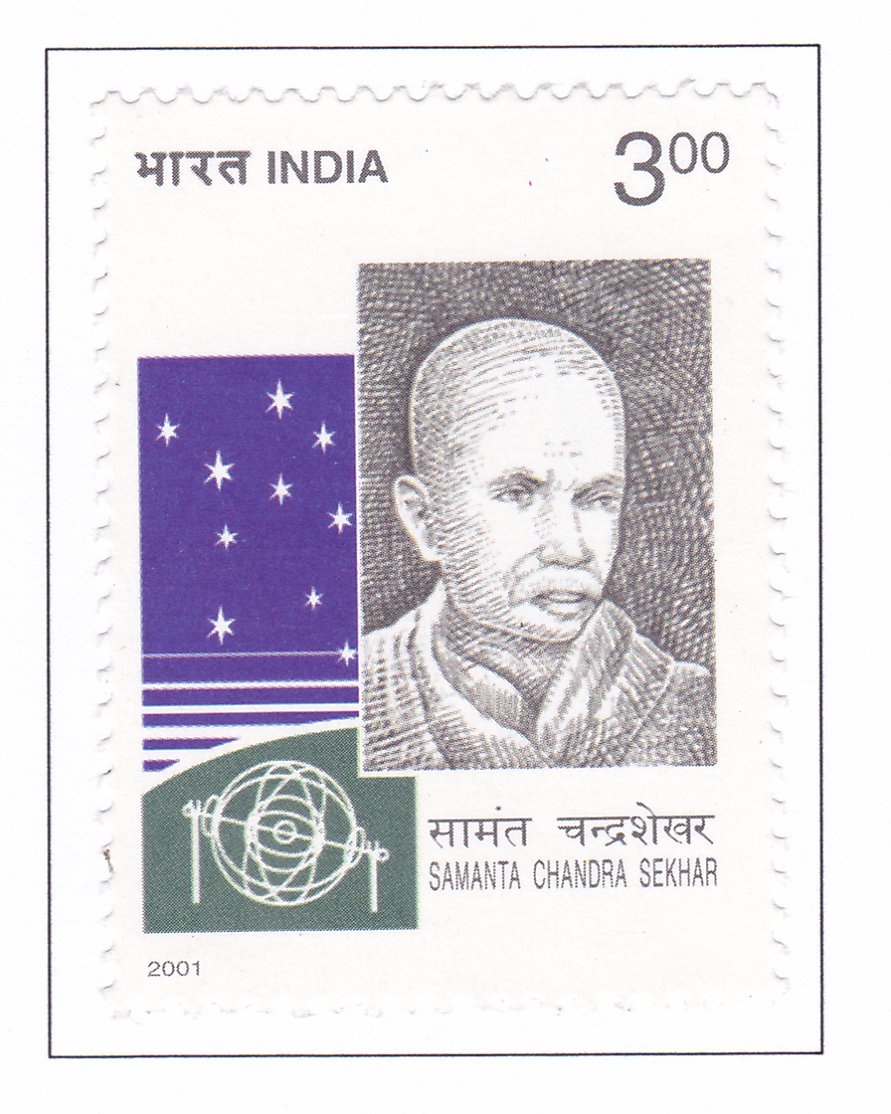Samanta Chandra Sekhar (1835-1904)

Technical Data
| Date of Issue | June 11, 2001 |
|---|---|
| Denomination | Rs. 3 |
| Quantity | 400,000 |
| Perforation | comb 13 |
| Printer | Madras Security Printers |
| Watermark | No Watermark |
| Colors | Multicolor |
| Catalog Codes |
Michel IN 1834 Stamp Number IN 1893 Yvert et Tellier IN 1600 Stanley Gibbons IN 2000 |
| Themes | Astronomers | Commemoration | Famous people | Instruments | Men | Stars |
Commemorative Stamp for Samanta Chandra Sekhar
Table of Contents
Design Elements:
Stamp Design:
- Description: Honors Samanta Chandra Sekhar, a pivotal figure in traditional Indian astronomy, recognized for his significant contributions and revival of astronomical traditions.
- Visuals: Features an image of Samanta Chandra Sekhar and the Gola Yantra, an instrument he used for measuring planetary positions.
Key Features:
- Historical Background:
- Early Life and Education: Highlights his early education in astronomy from his father and his self-directed study and observation.
- Siddhanta Darpana: Showcases his monumental work, the Siddhanta Darpana, including its five sections on planetary motion, spherical trigonometry, and time reckoning.
- Observational Techniques: Emphasizes his use of rudimentary instruments, including those he devised himself, for precise observations.
- Iconic Imagery:
- Portrait of Chandra Sekhar: An image of Samanta Chandra Sekhar, reflecting his scholarly and observational prowess.
- Gola Yantra: Depicts the Gola Yantra, a key instrument used by Chandra Sekhar in his astronomical observations.
- Scientific Journals: Mentions accolades from “Nature” and “Knowledge” journals, praising his contributions and comparing him to Tycho Brahe.
Cultural and Historical Significance:
- Revival of Indian Astronomy: Recognizes Chandra Sekhar’s role in preserving and advancing traditional Indian astronomy.
- Scientific Contributions: Celebrates his contributions to observational techniques, calculations, and theoretical models in astronomy.
- Legacy and Modern Relevance: Connects ancient astronomical practices to modern advancements in Indian astronomy, exemplified by the Giant Metrewave Radio Telescope (GMRT).
First Day Cover:
- Design: Features the Giant Metrewave Radio Telescope (GMRT) located in Khodad, Pune, symbolizing the advancement of modern Indian astronomy.
- Additional Features: Includes information about Samanta Chandra Sekhar’s life, his contributions to astronomy, and the connection between ancient and modern astronomical practices.
Significance:
The stamp commemorating Samanta Chandra Sekhar pays tribute to his remarkable contributions to traditional Indian astronomy. It highlights his meticulous work in observing and documenting celestial phenomena, his innovative use of instruments, and the lasting impact of his work on modern astronomical practices. The stamp and first-day cover together celebrate the continuity and evolution of Indian astronomy from ancient times to the present day.
